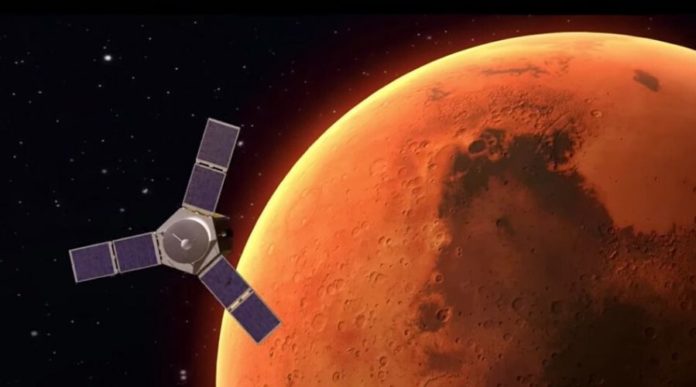Despite the pandemic outbreak halting the entire world, The Emirates Mars Mission, the first interplanetary exploration undertaken by an Arab nation, today announced the scheduled launch of its Mars Hope Probe in a 495,000,000km journey to reach and orbit the Red Planet.
It’s official! Less than 2 months to go ..before we launch to #Mars! #July15 #HopeProbe #EmiratesMarsMission pic.twitter.com/PmekSYNbK8
— Hope Mars Mission (@HopeMarsMission) May 19, 2020
Hope’s scientists, from Dubai’s Mohammed Bin Rashid Space Center (MBRSC), plan to send the craft into space at the same time as NASA’s Perseverance Rover and China’s first Mars mission, Tianwen 1.
The UAE, has previously collaborated with MHI to successfully launch the Khalifa Sat satellite.
Aiming to launch during the biennial window, when Earth and Mars are closest together, starting in July 2020 and going into early August.
The countdown to the launch begins after the probe’s successful transfer from the UAE to Japan, in a journey that spanned more than 83 hours by land, air and sea.
As planned, the world will see the Hope Probe launch into space on Wednesday, 15 July 2020 at 00:51:27 UAE time (05:51:27, Japan time) from Japan’s Tanegashima Space Centre, leveraging the Mitsubishi Heavy Industries (MHI H2A) platform.
Since its successful arrival at TNSC in Japan, the Hope Probe has undergone detailed processing operations for the launch.
The Journey
The journey of moving the Hope Probe from Dubai to the launch site on Tanegashima Island in Japan spanned more than 83 hours and underwent three major stages.
The first phase involved the preparation and transportation of the probe from the Mohammed Bin Rashid Space Center to Dubai’s Al Maktoum International Airport, which spanned 16 hours.
The second stage saw the probe’s 11-hour transfer from Al Maktoum International Airport in Dubai to Nagoya Airport in Japan and included loading the probe and its supporting equipment into the giant ‘Antonov 12’ plane – the largest cargo plane in the world.
In light of the challenges posed by COVID-19, internationally approved stringent health procedures were followed to safeguard the health and safety of the team in Dubai, as well as the team accompanying the probe on its flight to Japan.
The third stage was the probe’s transfer from Nagoya Airport to the launch site on Tanegashima Island. It included the probe’s safe landing and land transportation to Shimama Harbor, and its final transfer by sea to Tanegashima Island.
Her Excellency Sarah Bint Youssef Al-Amiri, Minister of State for Advanced Sciences and Emirates Mars Mission Deputy Project Manager, said: “The challenges overcome by the Hope Probe team amidst the global pandemic confirm the UAE mission’s commitment to achieve the impossible.”
This process completed over 50 working days, entails filling the fuel tank with about 700 kilograms of hydrogen fuel and ensuring there are no leaks. The process also requires testing the communication and control devices, moving the probe to the launch pad, installing the probe on the rocket that will carry it to space, and ensuring the probe batteries are fully charged.
A team of Emirati nationals is leading the operation and supervising every aspect of the probe’s preparation for its launch.
The Hope Probe is anticipated to enter Mars’ orbit in February 2021, coinciding with the UAE’s golden jubilee celebrations to mark the historic union of the emirates.


























